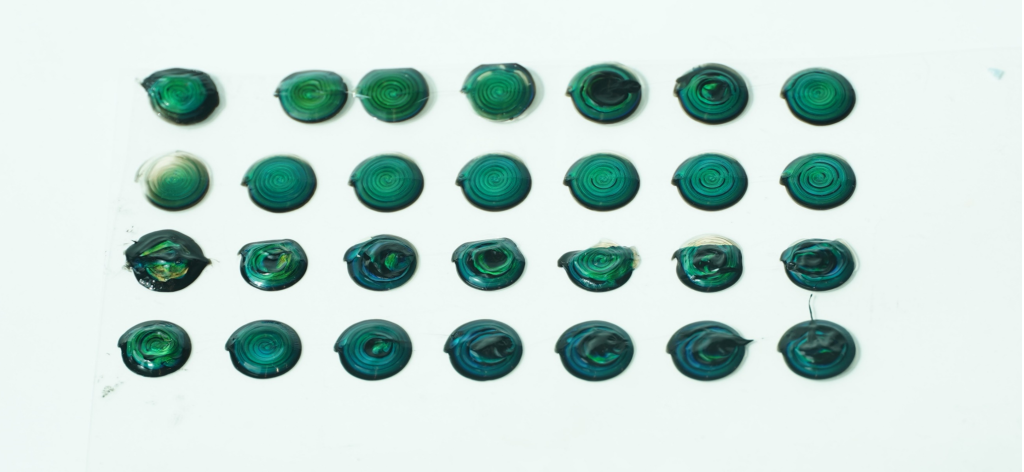
Ahu Gumrah Dumanli-Parry, Kathleen Lonsdale, Elif Ozden Yenigun, Hongning Ren, Xiao Tan and Han Zang
Animate Materials: Exploring Nature-Inspired Dynamic Color Adaptation
Inspired by the natural iridescent camouflage, we aim to articulate the principles of the making and interaction of structural colour through scientific documentation. Integrating science into art and design, our team challenges the human perception of colour in advanced textiles materials and processes, promoting a sustainable contemporary society based on natural principles. The size range of the installations and composite pieces are around 16 inches at the base and 20 inches high. The work will be presented as a combination static objects or digital display on the screen for the documentation of processes.
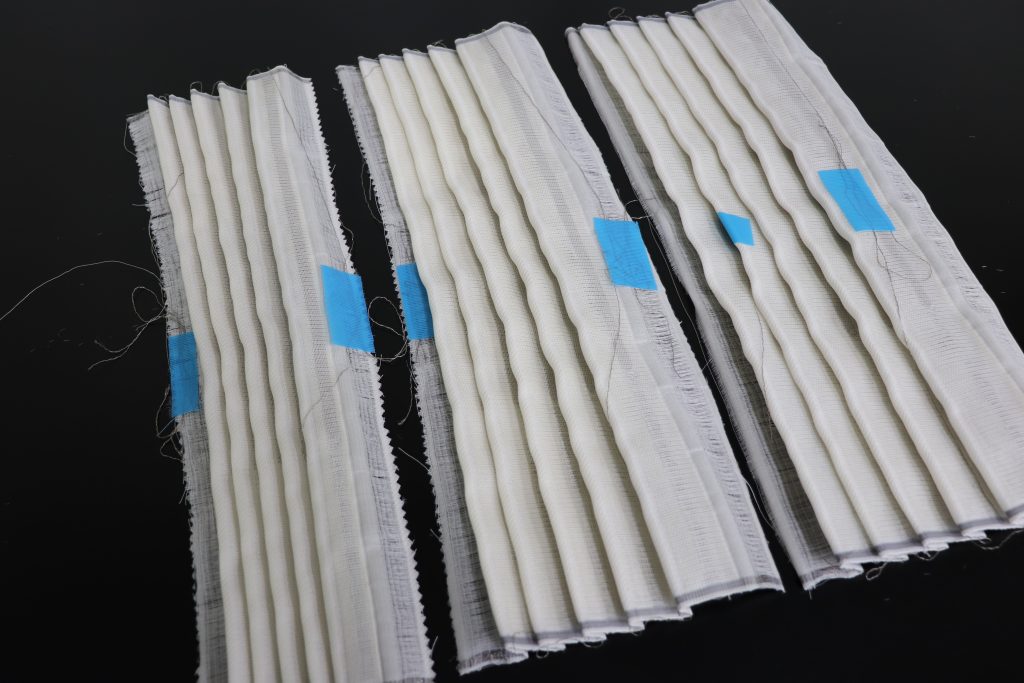
Tincuta Heinzel, Yukihiro Tokumoto, Tomohiro Inoue, Julia Cassim, Suguru Goto, Cosmina Maria Anghel, Dani Strickland
Capacitive Folding Jacquard Weave
The project pays homage to Issey Miyake’s ‘Pleats, Please!’ exhibition and was conceived as a pedagogical material to introduce students to Tango chirimen crepe technology, the self-folded woven fabrics using the Japanese Jacquard, and the notion of capacitance in e-textiles. The folded structures sense the changes in capacitance caused by the expansion and contraction of the pleats to produce sound.
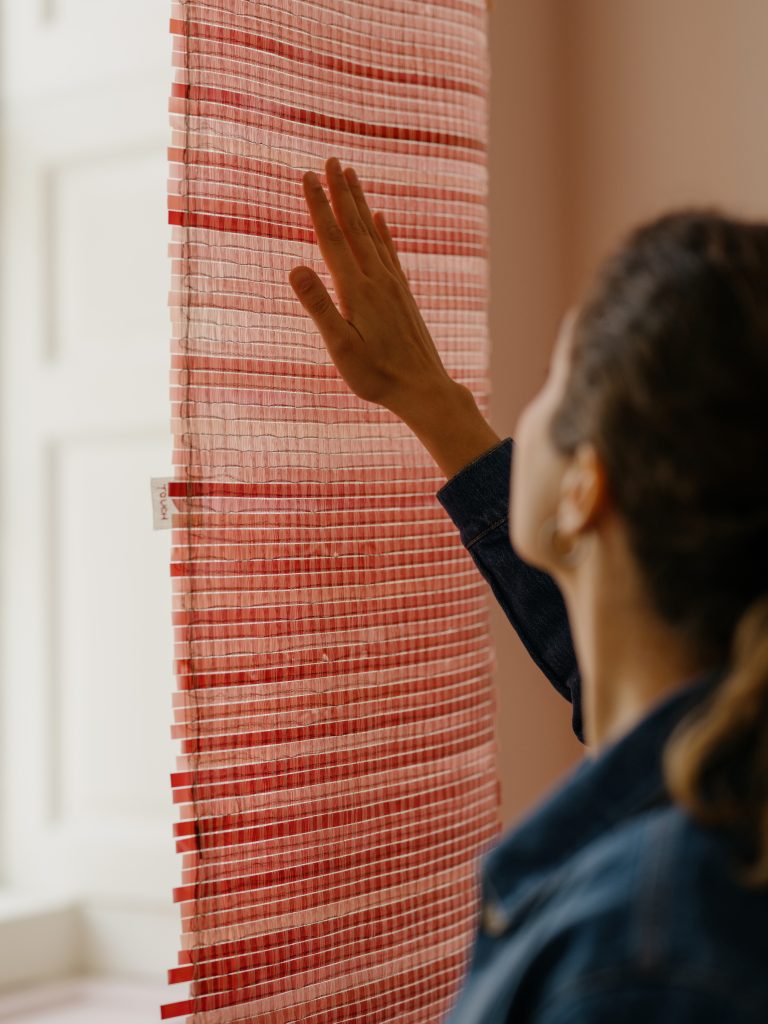
Sofía Guridi
Cellulose Interactions
In the aim for more sustainable options for Smart Textiles, this work presents novel manners of manipulating a cellulose-based material, i.e. Carboxymethyl cellulose (CMC), in combination with novel bio-based conductive yarns to create touch-sensing woven pieces. One piece is placed in water, portraying its degradability and dismantling as the exhibition occurs, showcasing its life cycle.
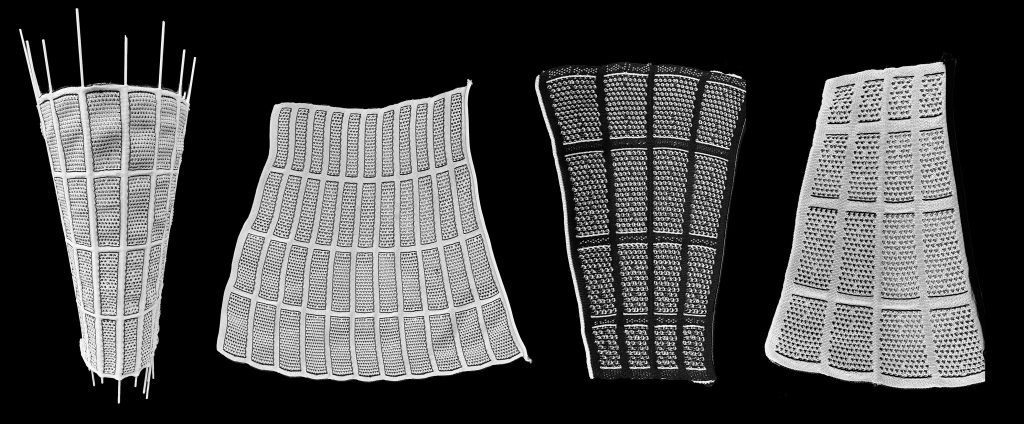
Linda Ohrn-McDaniel, Diane Davis-Sikora
ELSA – Elastic Lateral Surface Assembly
ELSA pavilion is a prototype for a hybrid, form-active textile assembly constructed of two nested and inverted deployable conical geometries. ELSA expands upon cross disciplinary research by team collaborators employing glass fiber reinforced polymer (GFRP) rods and CNC knitted textile construction. The proposed structural approach draws from fashion techniques and dressmaking typologies including farthingales, cage skirts, corseting, and boning methodologies.
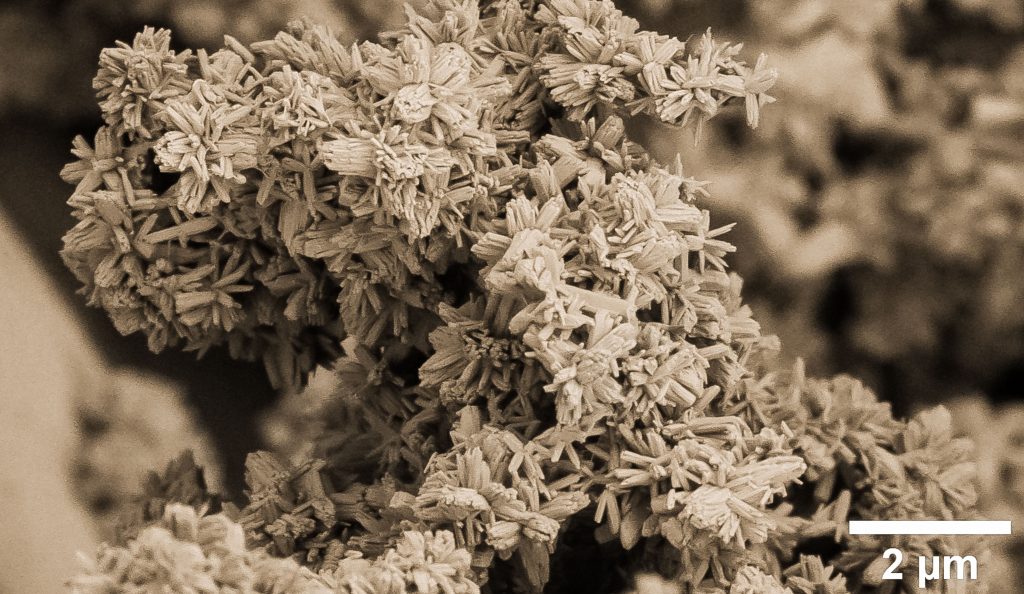
Delia Dumitrescu, Riikka Talman; Anne Louise Bang, Malene Harsaae, Inger Marie Ladekarl, Lena Kramer Pedersen, Tina Bull Nielsen, Amalie Ege; Alicja Lawrynowicz, Kati Miettunen, Rustem Nizamov, Mikael Nyberg; Jaana Vapaavuori, Laura Koskelo, Maija Vaara, Mithila Mohan, Pedro Silva, Zahra Madani
Entangled – Reimagining Textile Functionalities, Aesthetics and Sustainability
In the presented collection of artefacts, textiles are seen as active elements in their environments – responding to environmental stimuli by changing their shape, colour, or other qualities. This exhibition bases on interdisciplinary research work involving contributions from physics, crafting, materials engineering, and textile design. Employing methodologies from these various disciplines at different levels of hierarchy of textile construction helps to reimagine, materialise and finally realise new textile concepts.
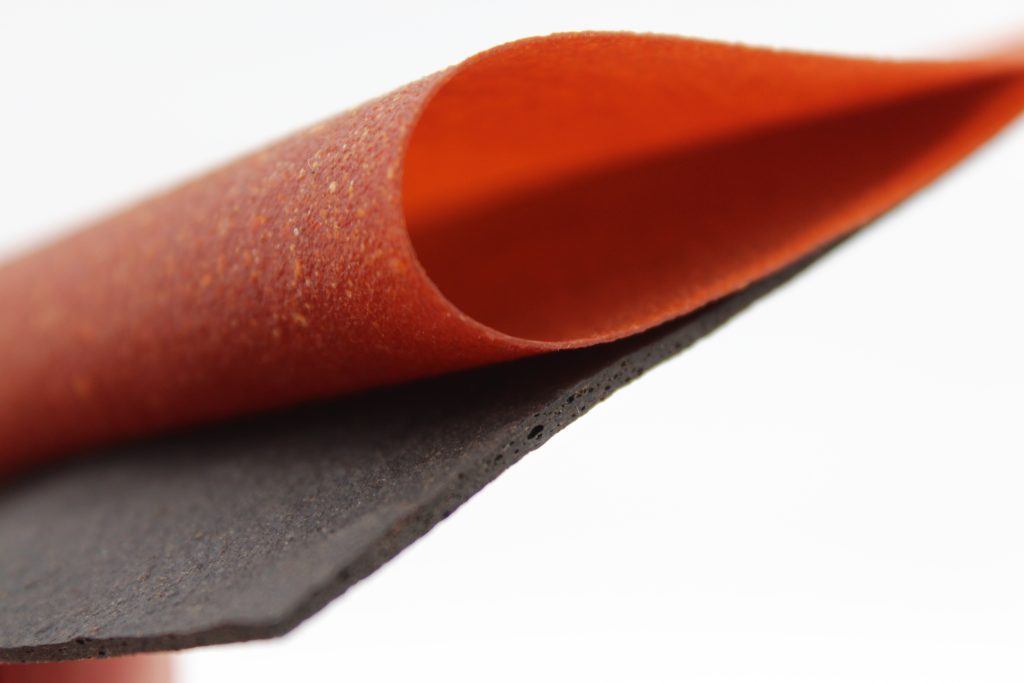
Manuel Arias Barrantes
Filamentous Future: Mycelium as a leather-like material
This work illustrates a continuous production method for making leather-like materials using submerged liquid fermentation. While traditional leather and its alternatives are sourced from animals and synthetic polymers, these renewable and sustainable mycelium-based materials can be produced by utilizing low-cost agricultural and forestry by-products and biological fungal growth process. This work is the result of interdisciplinary collaboration between designers, material scientists, microbiologists, and chemists.
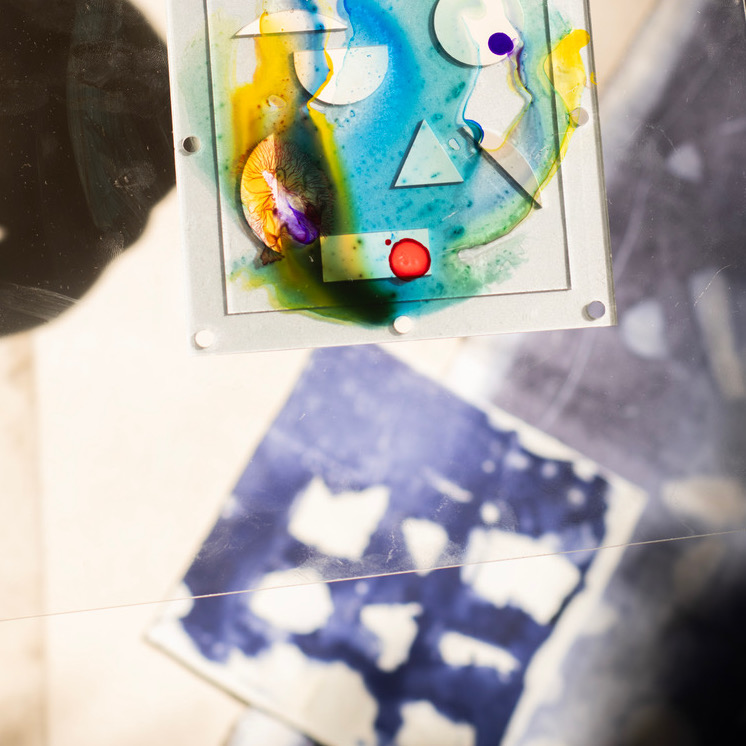
Julia Moser
Growing Patterns. Living Pigments
„Growing Patterns. Living Pigments“ is exploring the possibilities of dyeing textiles with pigment-producing bacteria. The combination of this resource-saving and environmentally friendly dyeing method with traditional and new technologies for the creation of intentional forms and shapes opens up completely new possibilities for making the world not only more colorful but also „greener“ and thus more sustainable.

Codi Körner, Emma Wood, Berit Greinke, Federico Visi
Interwoven Sound Spaces
Interwoven Sound Spaces is an interdisciplinary project spanning textile and garment design, wearable computing, sound engineering and telematics. The project culminated in a concert with ensembles in two geographic locations, performing works by four contemporary composers. Wearables worn by the musicians generated data which was fed back into the network, impacting how the music was heard in each location.
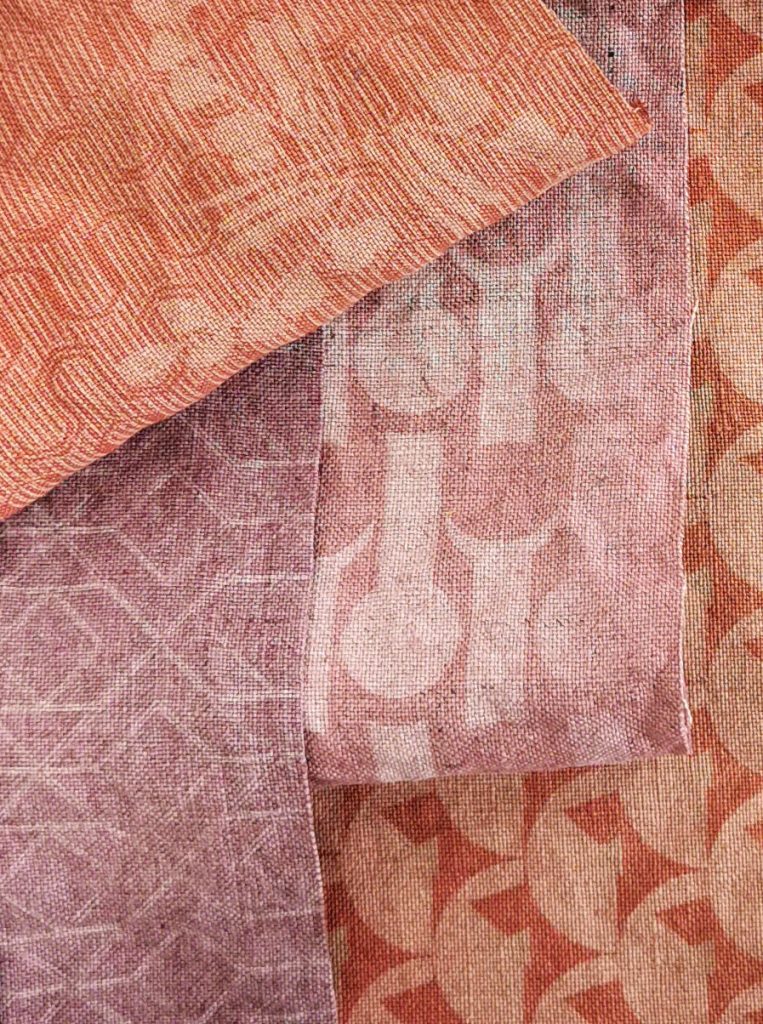
Laura Morgan, Rosy Heywood
Kind Materials Research
Kind Materials Research innovatively integrates bio-dyeing with laser technology, offering sustainable alternatives to conventional dyeing and finishing. Experimental bio-mordants derived from plant, fungi, and algae sources enhanced the natural dyes, eliminating toxicity. Laser irradiation was creatively employed as a print-process, introducing precise patterns. Combining these approaches resulted in Linen textiles that reimagine traditional coloration, aligning with sustainable, circular design principles.
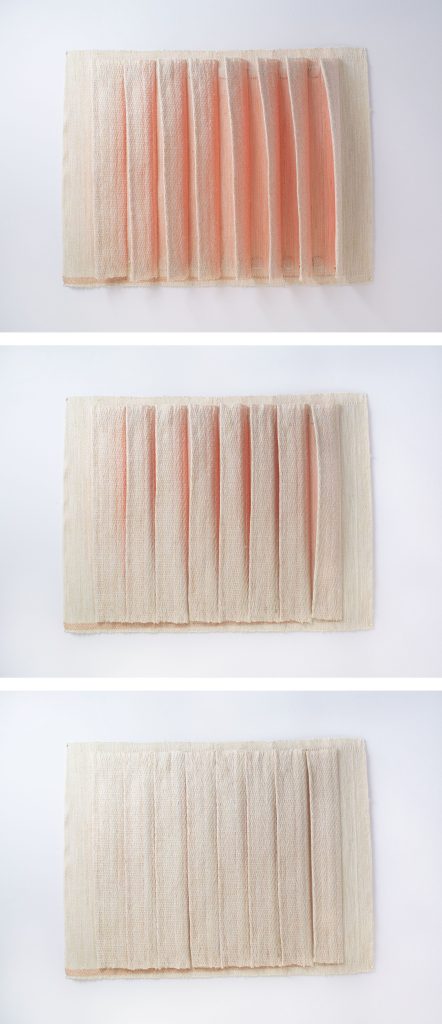
Elizabeth Meiklejohn, Laura Devendorf, Irene Posch
Magnetic Reverberations
What might a woven solenoid look like, and what could it do? This interactive textile reimagines electromagnetic actuators through the lens of soft goods and hand-operated Jacquard weaving. Magnets and copper coils embedded in the fabric’s layers enable the flaps on its surface to open and close, revealing the warm glow of neon yarns hidden inside.
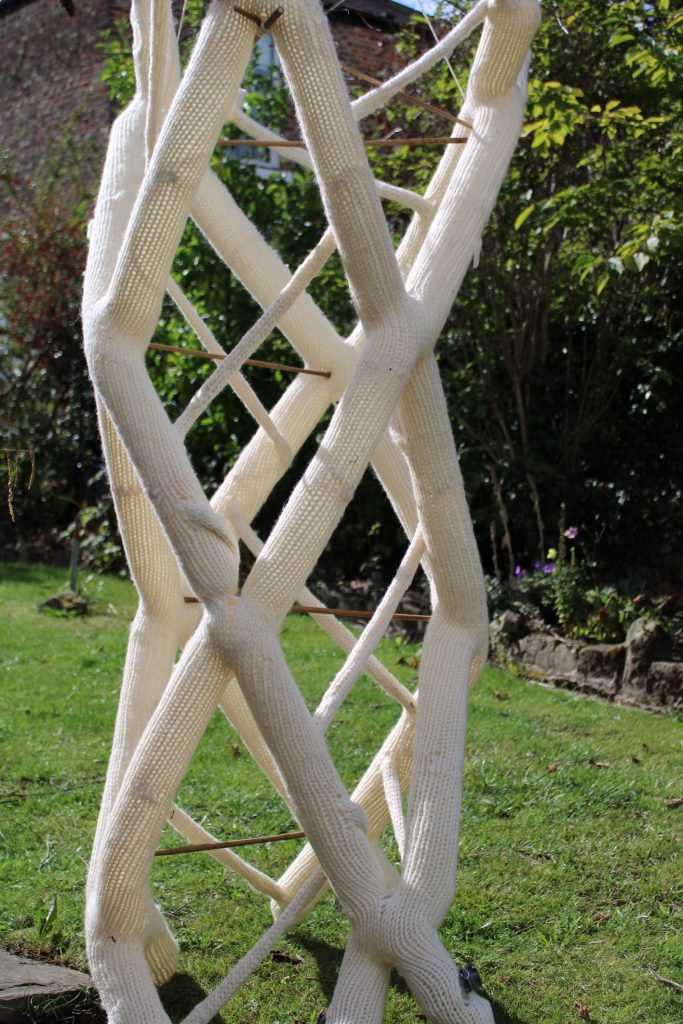
Elizabeth Gaston, Jane Scott, Armand Agraviador
Modular Knitted Architecture: Column
Modular Knitted Architecture: Column investigates form generation through collaborative, interdisciplinary digital/physical practice for novel architectural formwork design. The use of knit as architectural formwork utilises the 3D shaping capability of knitted fabric to provide a zero-waste production method for complex form. Additionally, knit can be produced using regenerative fibres and low-impact bio-materials, reducing the environmental impact of the construction industry.
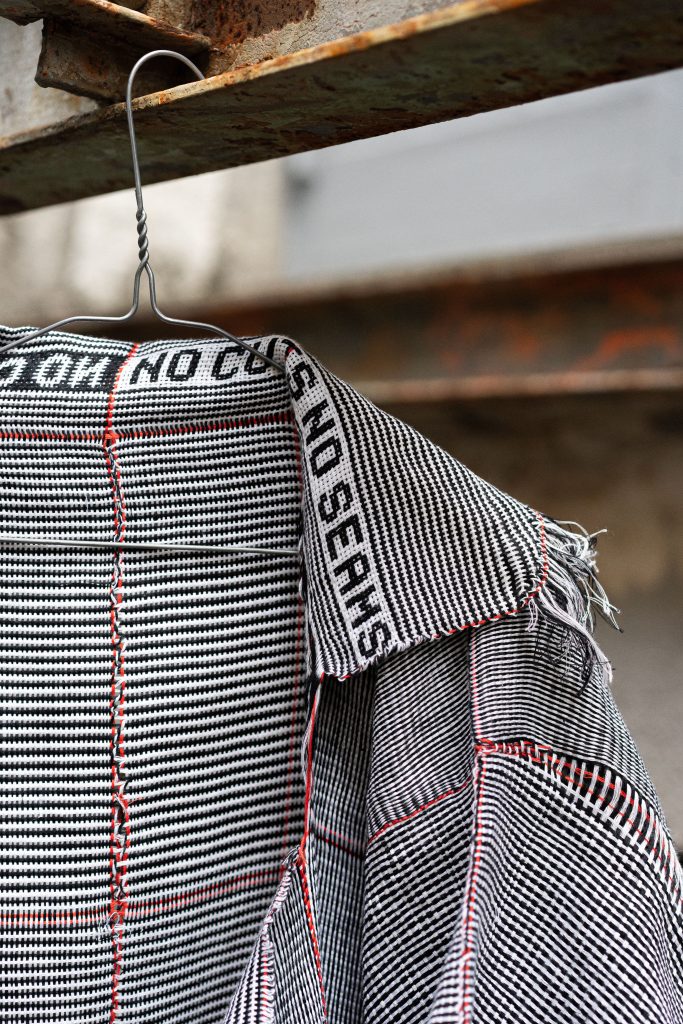
Juri-Apollo Drews
No Cuts No Seams
In his practice-based PhD project, Juri-Apollo Drews questions the use of the established cut-and-sew method, which generates 10-20% of cut waste during a garment’s production process. As a more sustainable and zero-waste alternative, he experimentally develops weaving techniques that allow for the production of garments completely devoid of cuts and seams and probes these in a series of prototypes.
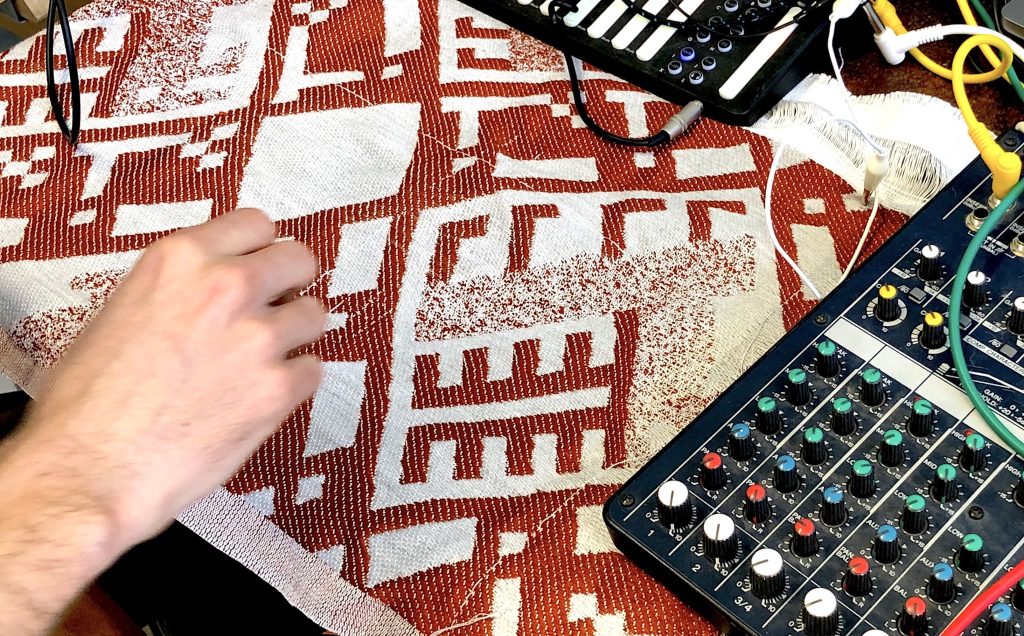
Sophie Skach, Victor Shepardson
No-Input Textiles
Interactive fabrics made from icelandic wool and conductive yarn, knitted and woven into traditional icelandic ornamental patterns (here featuring reindeers) are connected to a No-Input mixer, a self-oscillating mixing desk. It makes the textile sensing signals part of its feedback, creating a soft and flexible musical interface.
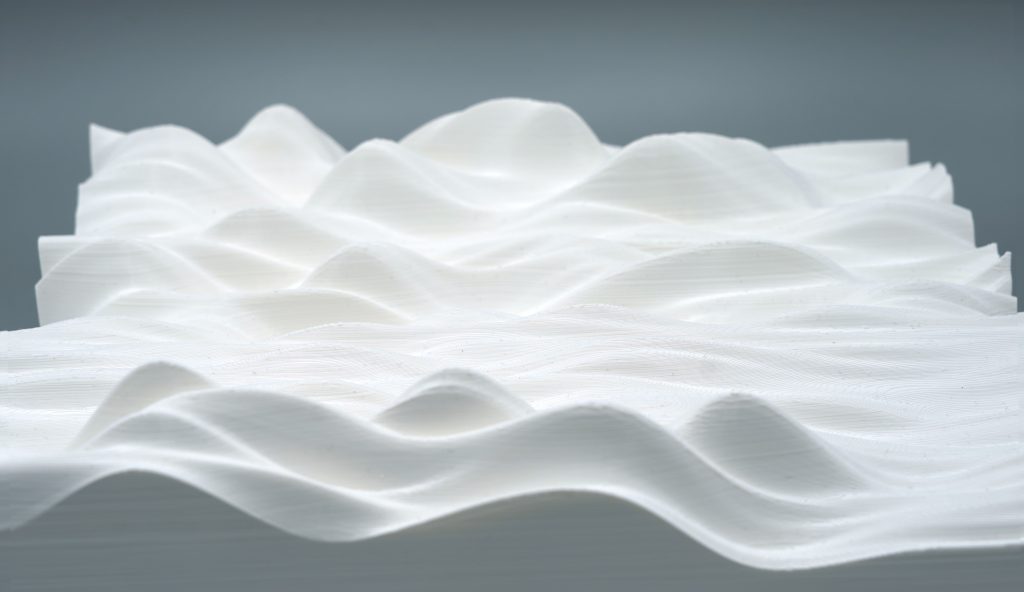
Erin Lewis
Radiant Textiles: Field topologies of woven textile structures
Radiant textiles are smart textiles regarded for their electromagnetic properties. The work is a series of 3D-printed objects that make visible the otherwise imperceptible magnetic fields of woven textile structures. These fields are captured through a “magnetic textile scanning” method that employs magnetometer readings. The data is used in 3D design software to create visualizations for 3D printing.
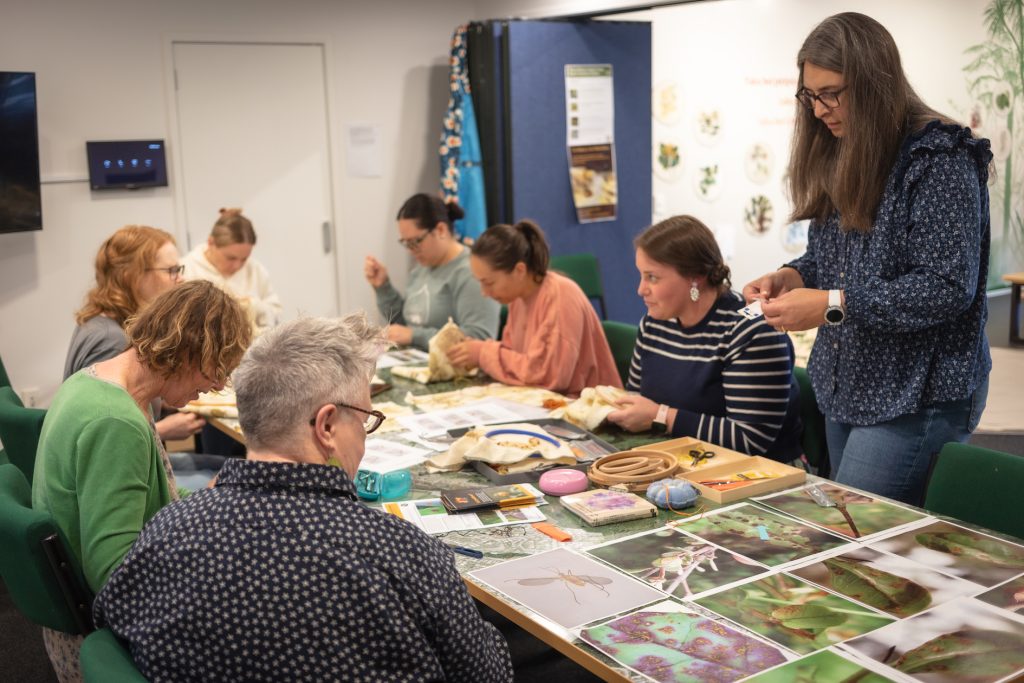
Angela Kilford, Te Whanau A Kai, Ngāti Porou, Ngāti Kahungunu
Te Mara o Te Wairākau
An interdisciplinary project designed to cultivate and grow public awarenes of the effects of tree pathogens on Aotearoa New Zealand native forest. Angela Kilford aims to raise the awareness of the effects of myrtle rust (caused by Austropuccinia psidii) by exploring the dichotomy between beauty and disease. Through participatory workshops, participants were invited to embroider onto eco-prints to encourage dialogue of both the disease and its wider ecosystem.
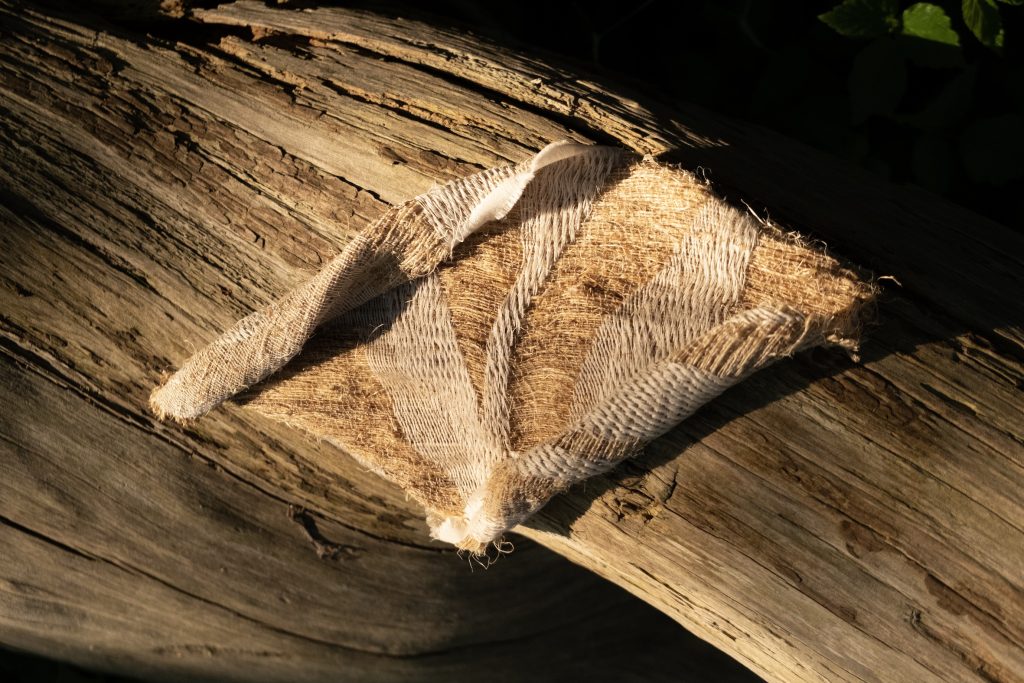
Maija Vaara, Laura Koskelo, Mithila Mohan, Jaana Vapaavuori
Weaving Landscapes – Near-sourcing weeds for developing cellulosic fibers and textiles
Weaving Landscapes illustrates a dialogue between land, material science and textile craft for developing sustainable textile pieces. The collaborative research textile design, craft and chemical engineering examines the role of materials and landscapes as co-participants that can influence the shift in perception of textile qualities, aesthetic engagement and making processes by investigating weeds as alternative textile materials.
